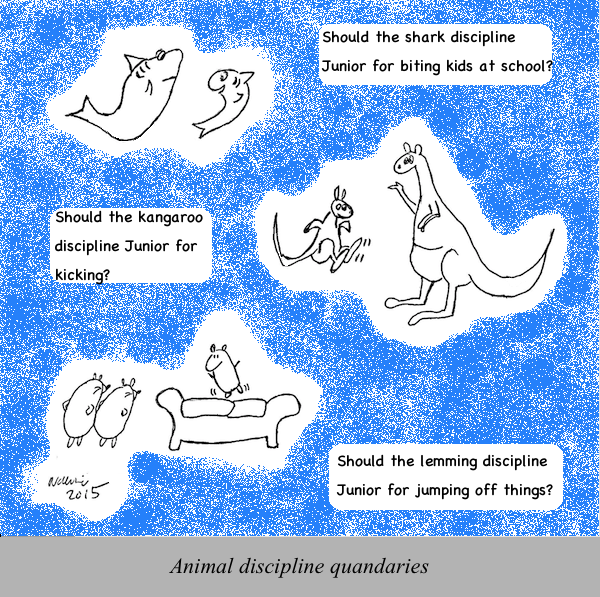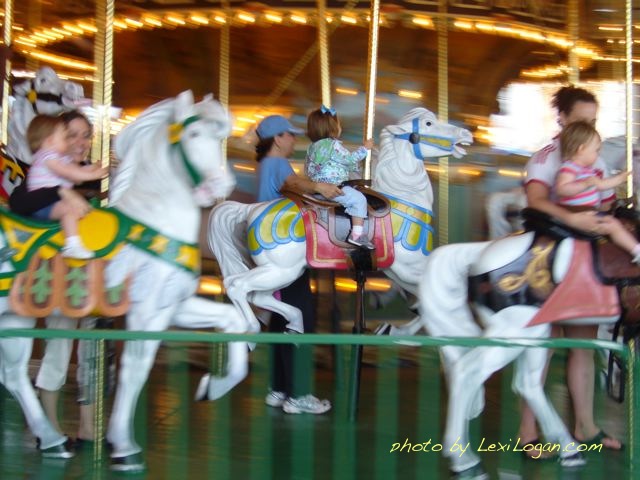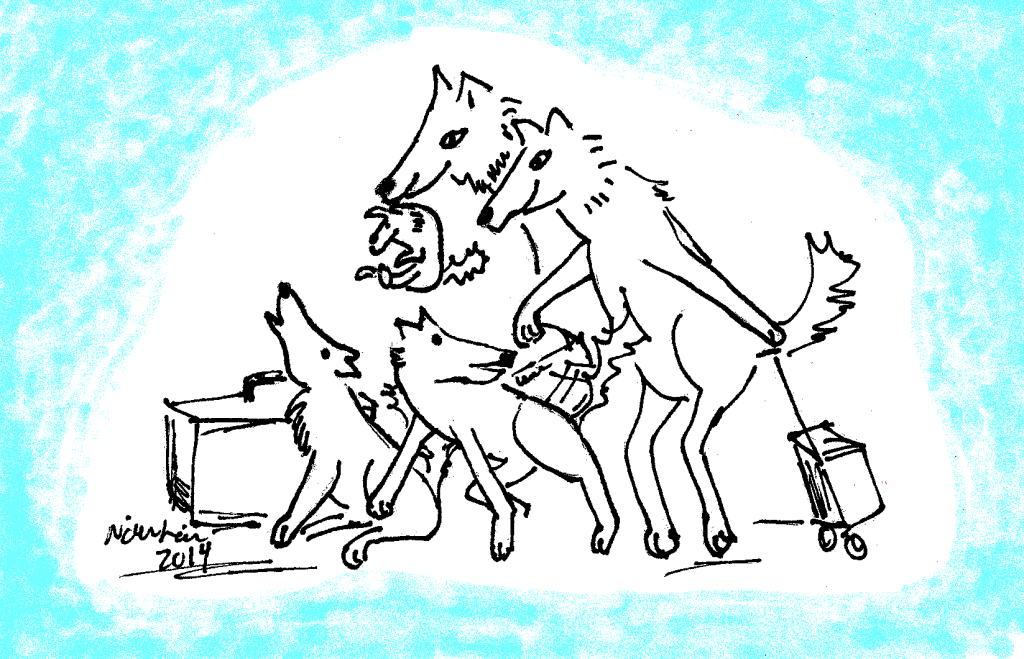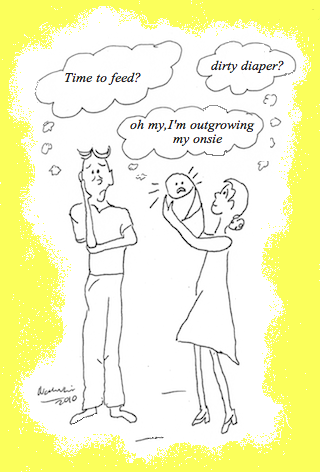Pleeeease- can we get a dog?
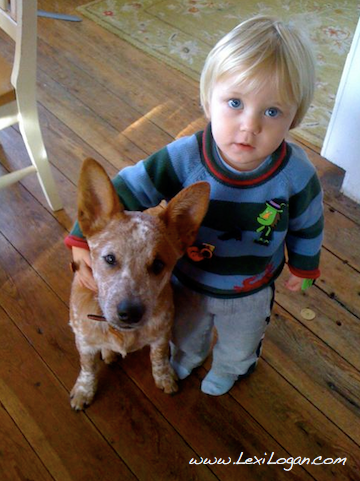 Many of our patients have dogs in their homes, and many families choose to adopt a dog during summer. Unfortunately, dog bite rates are also highest in summer, and occur most often in five to nine year olds, according to the Centers for Disease Control. Today we re-post tips on how to introduce a dog into a home with children and how to best avoid dog bites. We thank our expert consultant, veterinarian Sharin Skolnik, DVM.
Many of our patients have dogs in their homes, and many families choose to adopt a dog during summer. Unfortunately, dog bite rates are also highest in summer, and occur most often in five to nine year olds, according to the Centers for Disease Control. Today we re-post tips on how to introduce a dog into a home with children and how to best avoid dog bites. We thank our expert consultant, veterinarian Sharin Skolnik, DVM.
–Julie Kardos, MD and Naline Lai, MD
Two Peds: Are some breeds of dogs better for children?
Dr. Skolnik: Breed recommendations are tough, because there are such different personalities within every breed. Breeds bred to protect will tend to guard their family, but may not be friendly with other kids. I have had to euthanize golden retrievers and labs for severe aggression, and know some truly stellar pit bulls. I would like every family bringing a dog into their home to think about how much time and energy they can devote to the following: exercise/walks/play dates/ mental stimulation, grooming, feeding, veterinary care, and arranging travel concerns/contingency plans. If I had to pick a good family breed, I would suggest a Cavalier King Charles spaniel, but only if you forced me to pick one! Choosing the right dog for your family is the first big step, but do many people think about what comes with getting a new member of the family?
Two Peds: Any suggestions for screening a dog before bringing it into the family?
Dr. Skolnik: Many rescue groups use experienced foster homes to get an idea of where a dog is at before placement, which is wonderful. Look for a puppy or dog that is not too hyper or timid, unless you have the time and energy to devote to modifying these behaviors. Inquisitive but not pushy is ideal. Having said that, dogs are incredibly trainable in the right hands. Use care when bathing, feeding, or taking things away from a newly adopted dog. Trust is a two-way deal, and positive and gentle first interactions will set the stage for the relationship.
Two Peds: Why are young kids prone to dog bites by the family dog?
Dr. Skolnik: Many factors: kids are usually very bad at reading dog body language. For that matter, many adults I meet think that a wagging tail indicates a friendly dog, when in fact it means the dog is willing to interact, positively or negatively. Kids are usually loud and move unpredictably and quickly. Never leave kids and dogs unsupervised, because the kids may not understand how to be gentle and respectful of the dog. It is important to set clear and consistent expectations for both kids and dogs on what counts as acceptable behavior.
Two Peds: What should parents teach their children about approaching a dog?
Dr. Skolnik: Teach them to always ask an owner’s permission with unknown dogs. Look for “soft” features like relaxed ears, floppy wagging tail, wiggling body. Tense body, rigid tail (wagging or not), backing up, dilated pupils– leave that dog alone. Supervision by responsible adults is key.
Two Peds: How can a dog be taught to “respect” a child?
Dr. Skolnik: The same way dogs learn to leave people’s houses and other pets alone. “Claim” items as yours, and not the dog’s, while meeting their needs. When I adopt a new dog: Guinea pigs/cats/shoes/etc. are mine. Every time the dog shows an interest in one of these things, he is told firmly “No.” The dog is given plenty of walks through the woods, praise for desired behaviors, some one-on-one time, and a few weeks later and we usually are on the same page. Consistency in training is key. The dog can’t be allowed to chase the cat when you are not home, so keep them separated! Set the dog up for praise, gently but firmly correct missteps, don’t overcorrect or correct after the fact. The latter only increase anxiety and the likelihood of future behavior problems
A common mistake in dog discipline is relying too much on punishment/ negative corrections and ignoring “good” behavior. For example; yelling at the dog for grabbing at the kids’ clothes, hands, whatever and ignoring the dog when it is chewing one of its own toys. Dogs are pack creatures; they rarely will play by themselves. Single-dog homes especially need to budget enough time each day to meet the dog’s mental and physical needs.
Two Peds: Should a dog that bites a kid be given a second chance? Can dogs be rehabilitated?
Dr. Skolnik: Depends on the scenario. A very forward dog with a history of unprovoked aggression towards kids is going to require a huge commitment to prevent injury and likely needs to go where there are no children, or humanely put to sleep. Most vets are pretty intolerant of dog aggression towards children. Now if an adult dog unfamiliar with kids snaps when a kid grabs an ear, or tries to take something away, or if the dog gave some warning that the kid should back off– I would blame the adults that put those two in the situation. Dogs (and people) can be rehabilitated, but there will always be the possibility of relapse. There are no guarantees with behavior modification.
Sharin Skolnik, DVM, holds a Bachelor’s degree from Cornell University School of Agriculture and Life Science and a veterinary degree from University of Pennsylvania School of Veterinary Medicine. She has been practicing veterinary medicine for over 20 years and is a member of the AVMA and the NJVMA. She currently works at Chesterfield Veterinary Clinic in Bordentown, New Jersey.
Her “children” include horses, dogs, cats, guinea pigs, hamsters, sheep, chickens, and rabbits. She is also a long time friend of Dr. Kardos’s. Their children play well together under close supervision.
© 2011, 2016 Two Peds in a Pod®

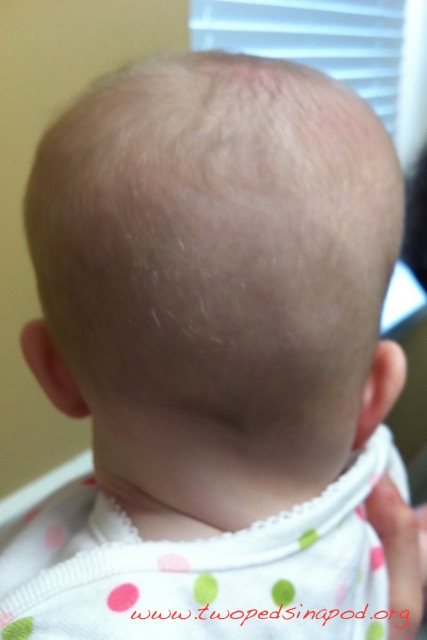 Squeezed through the birth canal, many babies are born with pointy, cone-shaped heads. Others, delivered by caesarian section, start off life with round heads. Few babies begin with a flat head. But as parents put babies on their backs to sleep in accordance with
Squeezed through the birth canal, many babies are born with pointy, cone-shaped heads. Others, delivered by caesarian section, start off life with round heads. Few babies begin with a flat head. But as parents put babies on their backs to sleep in accordance with 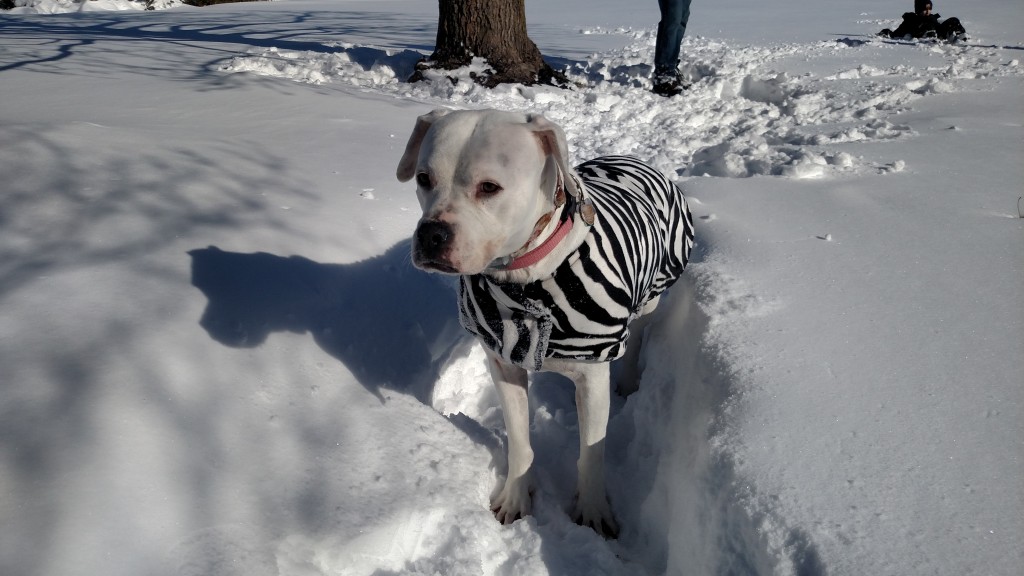
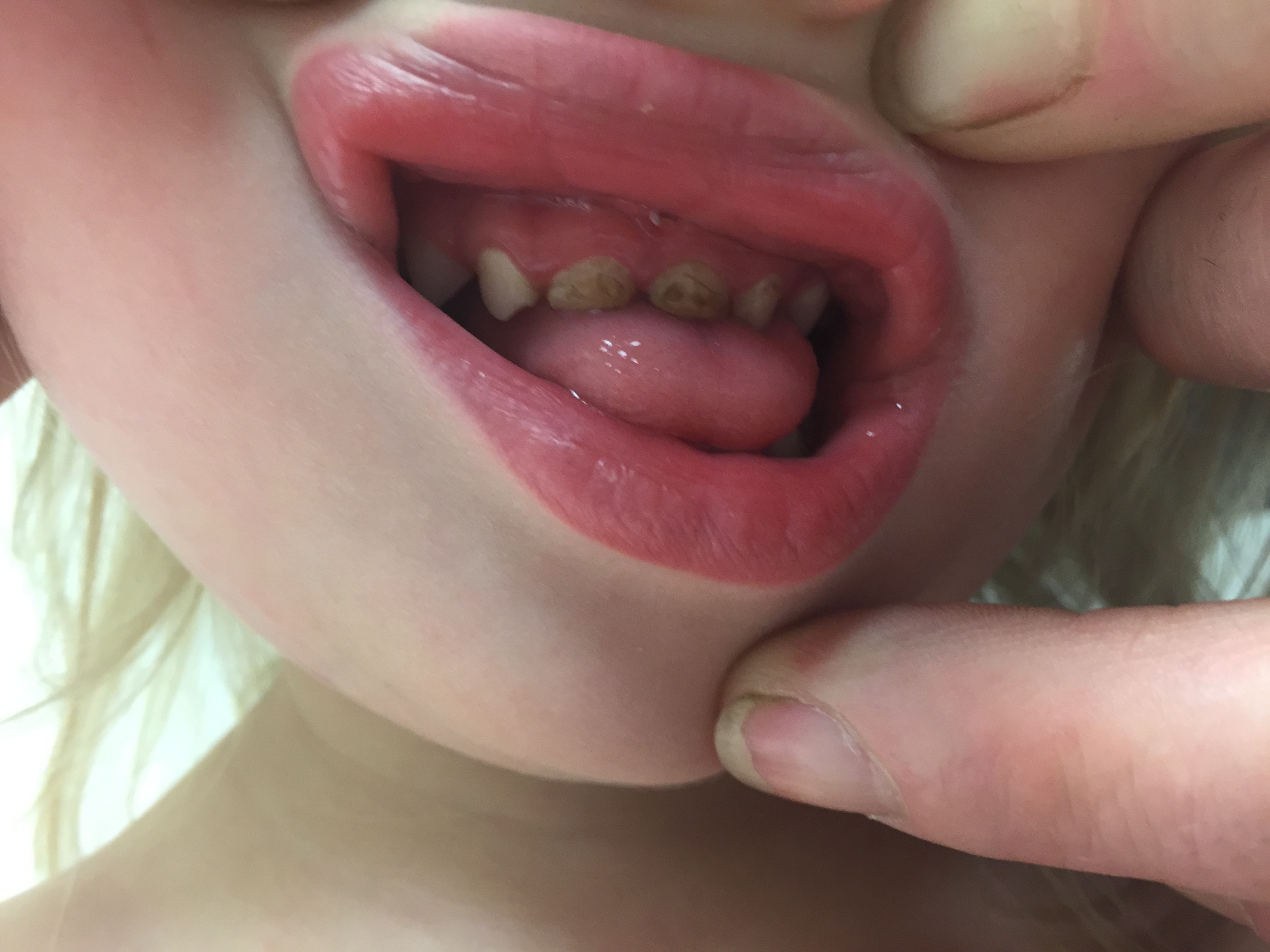 This drives us crazy: Listed on many pediatric developmental milestone charts, there is the six month milestone, ” can hold their own bottle. ” Unfortunately, this is the last thing we want our patients to do. Babies who feed by holding their own bottle tend to suck for a longer period of time than when they are at the breast or when a parent holds the bottle. Prolonging the time any sweet substance, whether breast milk, cow’s milk, or watered down juice is in the mouth can produce cavities. Even in toothless babies, the sugar can seep through gums and rot the teeth producing cavities called “bottle rot” in the two front teeth. As shown above, sucking on a sippy cup constantly can also produce the characteristic damaging pattern and cause rotten teeth.
This drives us crazy: Listed on many pediatric developmental milestone charts, there is the six month milestone, ” can hold their own bottle. ” Unfortunately, this is the last thing we want our patients to do. Babies who feed by holding their own bottle tend to suck for a longer period of time than when they are at the breast or when a parent holds the bottle. Prolonging the time any sweet substance, whether breast milk, cow’s milk, or watered down juice is in the mouth can produce cavities. Even in toothless babies, the sugar can seep through gums and rot the teeth producing cavities called “bottle rot” in the two front teeth. As shown above, sucking on a sippy cup constantly can also produce the characteristic damaging pattern and cause rotten teeth.